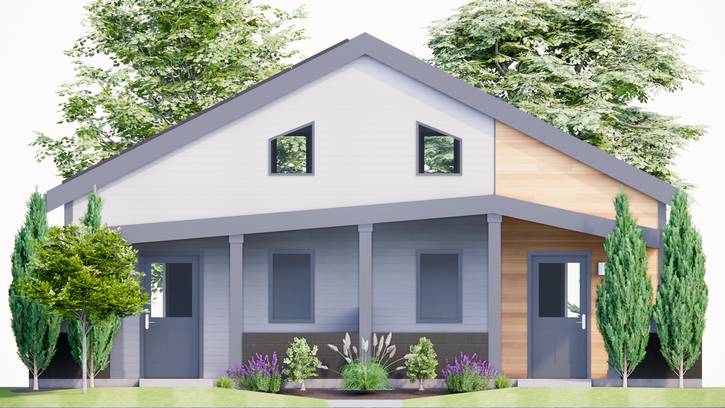The Great Mortgage Lock-In: A Nation Held Captive by History
During the dizzying days of the pandemic, as uncertainty loomed and the global economy teetered, one sector offered an unexpected silver lining for many Americans: the housing market. Interest rates, slashed to historic lows, presented an irresistible opportunity for millions to buy their first homes or refinance existing mortgages, securing payments that seemed almost impossibly affordable. What felt like a financial triumph at the time has, for a significant portion of these homeowners, morphed into a golden handcuff, effectively locking them into their current residences and creating a profound, nationwide stagnation in the housing market that continues to reverberate today.
The Pandemic’s Peculiar Paradox: Low Rates, High Stakes
The core of this unprecedented lock-in effect is simple: the vast chasm between the mortgage rates secured during 2020-2021 and today’s elevated borrowing costs. Many homeowners are enjoying rates as low as 2% or 3%, figures that are scarcely believable in the current economic climate where rates have surged to 7% or even higher. The prospect of trading a 3% mortgage for a 7% one on a new property, often more expensive, is a financial non-starter for most households.
- Stifled Mobility: This disparity directly impacts homeowners’ ability to move for new jobs, changing family needs, or simply to downsize or upgrade. They are effectively trapped by their advantageous rates.
- Reduced Inventory: Existing homeowners, unwilling to give up their low rates, are not listing their homes for sale. This creates a severe shortage of available housing, driving up prices for the limited stock that does appear on the market.
- Economic Drag: The lack of housing turnover ripples through various sectors, impacting real estate agents, moving companies, home improvement retailers, and even local tax revenues.
“We’d love to move closer to my parents, but if we sell our house, our monthly payment would nearly double for a comparable property. We feel stuck, unable to make the life changes we desperately want to make, all because of a mortgage rate we once celebrated.” – A frustrated homeowner in Ohio.
A Stagnant Market: Economic Repercussions and Social Strain
The aggregate effect of millions of individual decisions to stay put has profound consequences for the broader economy and social fabric. First-time homebuyers, in particular, face an almost insurmountable challenge. They contend with high home prices due to limited supply, coupled with prohibitive interest rates that make entry-level homeownership a distant dream for many.
Beyond the Balance Sheet: The Human Cost of Immobility
The lock-in effect isn’t just a financial phenomenon; it’s a social one. Families are unable to expand into larger homes as children arrive, individuals cannot relocate for better job opportunities, and seniors find themselves unable to downsize to more manageable properties. This immobility strains local communities, impacts labor markets, and adds a layer of stress to personal lives that extends far beyond the monthly mortgage statement.
Experts are grappling with the long-term implications. Some predict a prolonged period of low turnover and high prices, while others suggest that economic shifts, such as a sustained decline in interest rates or a significant recession, would be necessary to truly unlock the market. The situation highlights a unique economic dilemma where the very benefit of low rates has become an unexpected impediment to market fluidity.
A Glimmer of Hope: Innovation in Affordable, Sustainable Housing
Amidst the widespread housing market paralysis, a beacon of progress shines in unexpected corners. While many homeowners grapple with the consequences of their pandemic-era rates, a distinct movement is gaining traction to address the persistent challenge of housing affordability, particularly for low-income populations. This week, a significant milestone is being marked in Cleveland by Lutheran Metropolitan Ministry (LMM), a non-profit organization dedicated to serving the vulnerable.
Cleveland’s Green Initiative: Solar-Powered Homes for Low-Income Tenants
LMM is unveiling its solar-powered pilot project, a pioneering initiative aimed at providing bright, efficient, and attainable housing solutions for low-income tenants. This project represents a new paradigm in affordable housing, integrating renewable energy and sustainable practices to not only reduce housing costs but also to promote environmental stewardship.
- Energy Efficiency: The homes are designed with state-of-the-art solar panels and energy-efficient construction, significantly lowering utility bills for residents.
- Attainable Living: By reducing ongoing costs, LMM makes quality housing genuinely accessible to those who need it most, addressing a critical gap in urban housing markets.
- Community Impact: This project doesn’t just provide shelter; it builds resilient communities, offering stable, healthy environments for families to thrive.
“Our vision is to break the cycle of poverty by providing not just a roof, but a home that empowers residents through reduced costs and sustainable living. This solar project is a testament to what’s possible when innovation meets compassion.” – LMM Spokesperson.
The Path Forward: Bridging Disparate Housing Challenges
The juxtaposition of these two housing narratives—the stagnation caused by mortgage rate lock-in and the innovation in affordable, sustainable housing—underscores the complex and multifaceted challenges facing the American housing sector. On one hand, millions of middle-class Americans find themselves unable to participate in the natural churn of the real estate market, impacting their personal growth and the broader economy. On the other, organizations like LMM are pushing the boundaries of what’s possible for those at the other end of the economic spectrum, demonstrating that smart, sustainable solutions can address deep-seated affordability crises.
Policy Adjustments and Market Evolution
Addressing the ‘mortgage lock-in’ will likely require a combination of policy adjustments and natural market evolution, perhaps through a significant shift in interest rate trajectories or novel financial products. Meanwhile, the success of projects like LMM’s offers a blueprint for how communities can proactively tackle housing insecurity through environmentally conscious and economically empowering designs. The future of American housing demands both macro-economic stability and micro-level innovation to ensure that shelter remains an attainable right, not a luxury or a trap.

